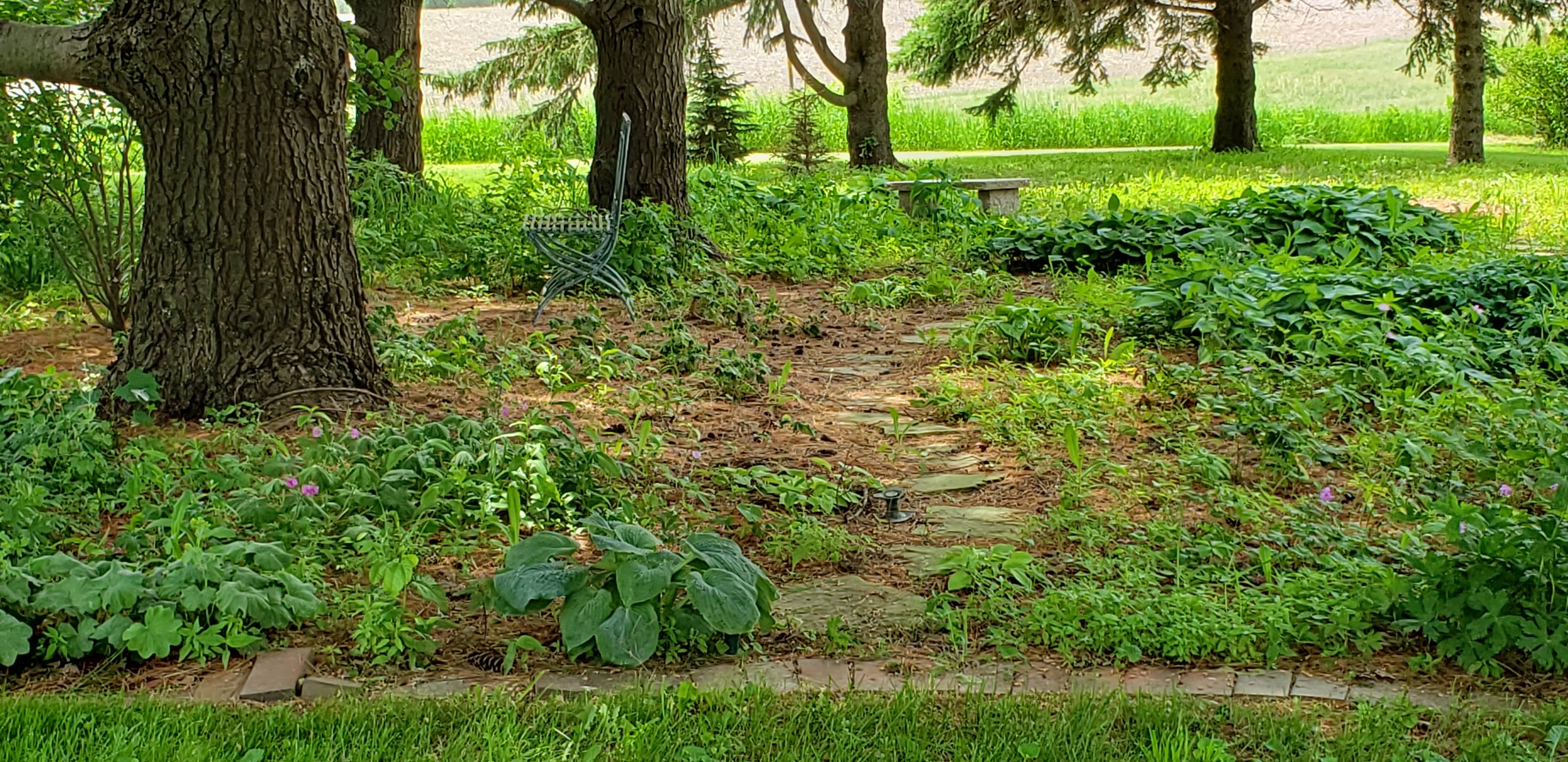Trees as Partners
Front Yard Mixed Species—Sugar Maple, Silver Maple, Serviceberry, Magnolia, White Pine. and Red Oak
An Early Snowfall Falls on Sweetgum, River Birch, Crab, and Larch
We have a gem in central Iowa. Trees Forever’s mission is to plant and care for trees and the environment by empowering people, building community, and promoting stewardship. The programs include establishing native habitat and pollinator buffers for bees and butterflies. Staff and volunteers are available to teach and lead communities in becoming stewards of the land.
I attended Trees Forever’s Our Woodland Legacy Symposium in December 2021. The morning virtual keynote speaker Dr. Suzanne Simard, author of the 2021 New York Times best seller, Finding the Mother Tree: Discovering the Wisdom of the Forest, spoke to us from British Columbia.
The title of her talk was Trees as Partners: Lessons from Old Growth Forests for our Urban Lives. She spoke about revitalizing our places by planting trees and how they provide cooling to our atmosphere and a spirituality to our lives. Human disturbances have degraded our soils which after clear cutting or other development can no longer support our trees with the soil food web, the community of organisms in the soil. As soil health diminishes, the resistance to pathogens, the uptake of nutrients, wilt tolerance, and other services are diminished. We need to conserve and protect our soils. Healthy soil has mycorrhizae which are soil fungi in the root systems of trees and connect trees to each other underground. They form communities in the soil and recognize and support each other.
River Birch Pair
I began to think about how we plant solitary trees in our landscapes, to fend for themselves. We may be limiting a vigorous and long life. Of course, in places like the Midwest where the landscape is open with more plains and fewer trees, we cannot expect to plant forests. However, we can consider planting groups of rather than solitary trees. Native prairie plants develop a similar community with their long roots which have created a fertile soil. The most important step is to take care of our soils so that they can support the trees and plants native to that place.
White Pine and Spruce Families Shade Garden
Two White Pines Shelter a Redbud
Side Yard Neighbors—Elizabeth Magnolia, Larch, Sweetgum, and Flowering Crab






